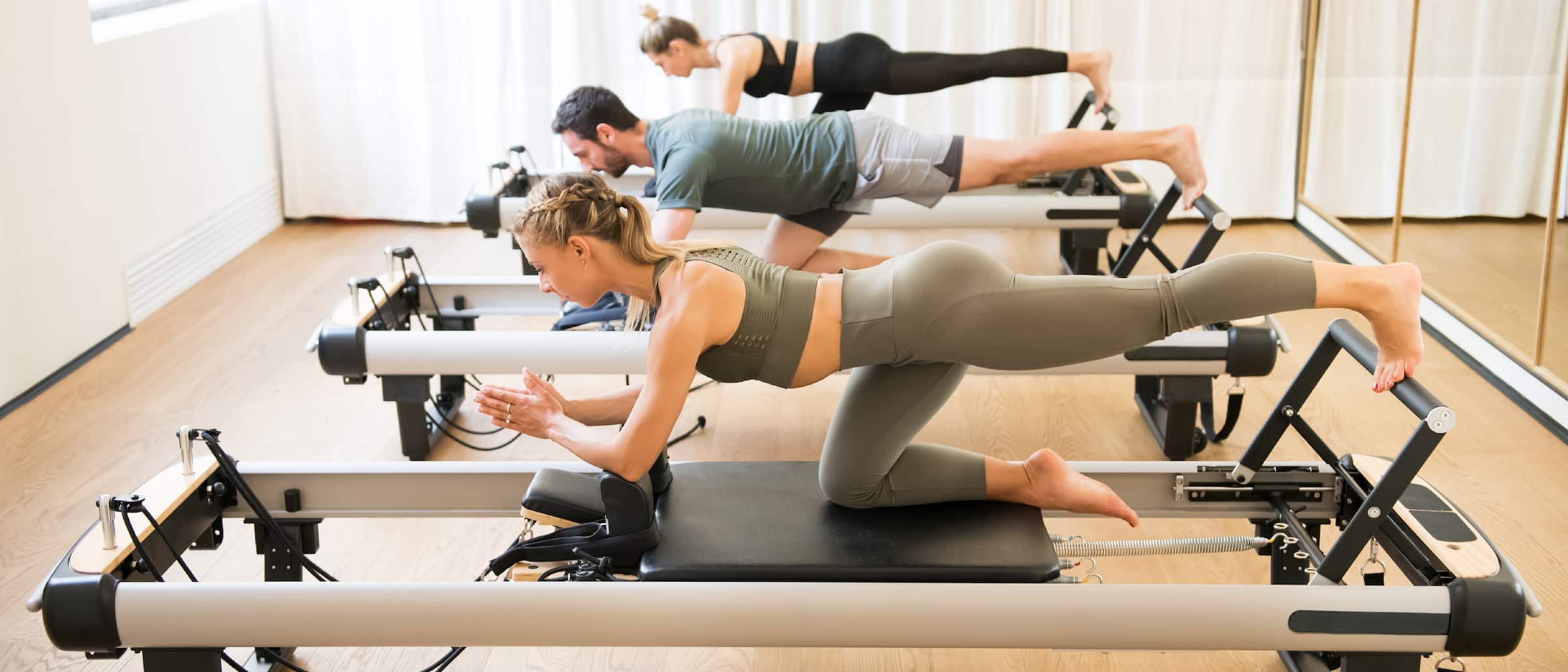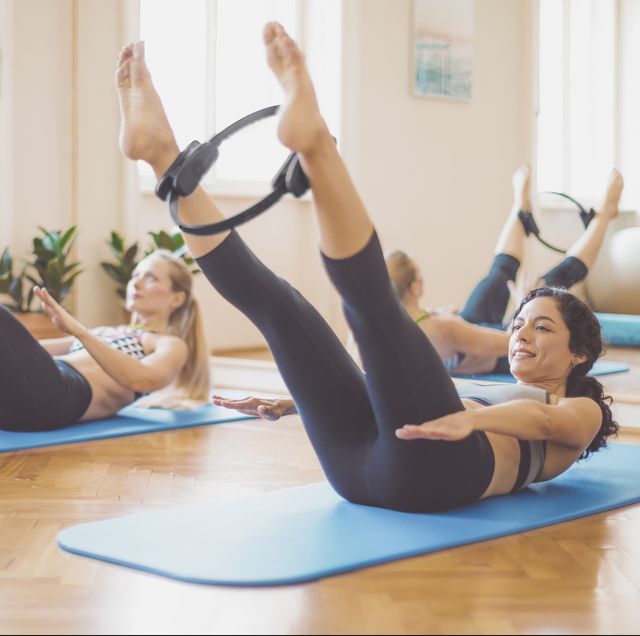Pilates, a low-impact exercise system developed by Joseph Pilates, has gained widespread popularity for its ability to enhance strength, core stability, and flexibility. While strength and core conditioning are often associated with Pilates, its potential for improving flexibility is equally noteworthy. Flexibility, the ability of your joints to move through a full range of motion, is crucial for maintaining a healthy and active lifestyle. It allows for smooth and efficient movement, prevents injuries, and enhances overall well-being. Imagine effortlessly reaching for a high shelf, bending down to tie your shoes without discomfort, or participating in your favorite sports or activities with ease. These are just a few examples of how flexibility impacts our daily lives. As we age, our muscles naturally tend to tighten, leading to decreased flexibility. This can limit our mobility and increase our risk of falls and injuries. However, through regular Pilates practice, we can actively combat these age-related changes and maintain a youthful range of motion.
Benefits of Pilates for Flexibility

Pilates goes beyond simply stretching muscles; it focuses on controlled movements and targeted stretches that engage the entire body, promoting flexibility with a focus on precision and mindful execution. This approach not only increases flexibility but also improves posture, balance, and coordination. It targets both the deep stabilizing muscles and the superficial muscles, creating a balance between strength and flexibility.
How Pilates helps improve flexibility through controlled movements and stretches
One of the key principles of Pilates is control. Every movement is performed with precise control and alignment, which helps to prevent injury and ensures maximum benefit from each exercise. This control extends to the stretching aspect of Pilates as well. Rather than forcing your body into a position, Pilates encourages a slow and deliberate stretch, allowing the muscle to gradually open up and release tension. This controlled stretching helps to elongate and lengthen the muscles, increasing flexibility without straining or damaging them.
Additionally, Pilates exercises often involve full body movements that require a wide range of motion. These exercises target specific muscle groups while also engaging the supporting muscles throughout the body. By moving through a full range of motion, you are working on both strength and flexibility simultaneously, creating a balanced and functional body.
Discuss the specific Pilates exercises that target different muscle groups for increased flexibility
Pilates offers a variety of exercises that target different muscle groups and promote flexibility. Here are some examples of Pilates exercises that can help improve flexibility:
- Roll-up: This exercise targets the abdominals, lower back, and hamstrings, promoting flexibility in these areas. Start by lying down on your back with your arms extended above your head. Inhale, and as you exhale, engage your abdominal muscles to lift your head and shoulders off the mat. Continue rolling up until your fingertips reach your toes. Hold this position for a few seconds before slowly rolling back down to the starting position. Repeat for 8-10 repetitions.
- Spine stretch forward: This exercise stretches the entire spine, from the neck to the lower back. Sit tall with your legs extended in front of you, and your arms reaching towards your feet. Inhale, and as you exhale, start rolling your spine one vertebra at a time, reaching for your toes. Hold this position for a few seconds before rolling back up to the starting position. Repeat for 8-10 repetitions.
- Swan dive: This exercise targets the back, shoulders, and hips, improving flexibility in these areas. Lie on your stomach with your arms stretched out in front of you. Inhale, and as you exhale, lift your upper body off the mat, keeping your arms and legs extended. Hold this position for a few seconds before lowering back down. Repeat for 8-10 repetitions.
- Standing side bend: This exercise stretches the sides of the body and promotes flexibility in the spine and hips. Stand with your feet hip-width apart, arms extended above your head. Inhale, and as you exhale, bend to one side, reaching towards your toes with your arm while keeping your hips stable. Hold this position for a few seconds before returning to the starting position. Repeat on the other side and complete 8-10 repetitions on each side.
- Roll-down with spine twist: This exercise targets the spine, shoulders, and chest, increasing flexibility in these areas. Start by standing tall with your arms extended in front of you. Inhale, and as you exhale, start rolling down one vertebra at a time until your fingertips reach the mat. From this position, inhale, and as you exhale, twist your upper body to one side, reaching your arm towards the ceiling. Hold for a few seconds before returning to center and rolling back up. Repeat on the other side and complete 8-10 repetitions on each side.
Mistakes to Avoid

While Pilates can be highly beneficial for improving flexibility, there are some common mistakes that people make when practicing it. These mistakes can not only hinder your progress but also lead to injury. Here are some mistakes to avoid when doing Pilates for flexibility:
- Not warming up: Just like any form of exercise, it’s important to warm up your muscles before diving into the more intense exercises. Skipping the warm-up can increase the risk of injury and decrease the effectiveness of the workout. Take a few minutes to do some light cardio or dynamic stretches before beginning your Pilates routine.
- Using improper form: Proper form is crucial in Pilates, as it ensures that you are targeting the correct muscles and prevents strain on the joints. If you are unsure about the proper form for a particular exercise, seek guidance from a qualified Pilates instructor or refer to instructional videos.
- Holding your breath: Breathing is an essential part of Pilates, and it’s important to maintain a steady and controlled breath throughout the exercises. Holding your breath can cause tension in the muscles and impact the effectiveness of the exercise. Remember to inhale through your nose and exhale through your mouth during each movement.
- Pushing yourself too hard: While it’s important to challenge yourself during Pilates, pushing yourself beyond your limits can lead to injury and hinder your progress. Listen to your body and modify the exercises if needed. It’s better to do fewer reps with proper form than to push through with incorrect form.
- Not cooling down: Just like warming up, cooling down is an essential part of any workout. It allows your body to gradually return to its resting state, preventing dizziness or lightheadedness. Take a few minutes at the end of your Pilates session to stretch out your muscles and lower your heart rate.
Pilates Exercises for Legs Strengthen and Sculpt Your Lower Body
Pilates is a fantastic form of exercise that offers numerous benefits for flexibility. By focusing on controlled movements and engaging the entire body, it can help improve range of motion, prevent injuries, and promote overall well-being. However, it’s important to avoid common mistakes when practicing Pilates for flexibility to ensure safe and effective results. With the right approach and consistency, Pilates can help you achieve a balanced and flexible body.


